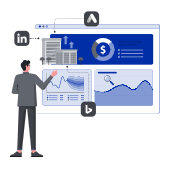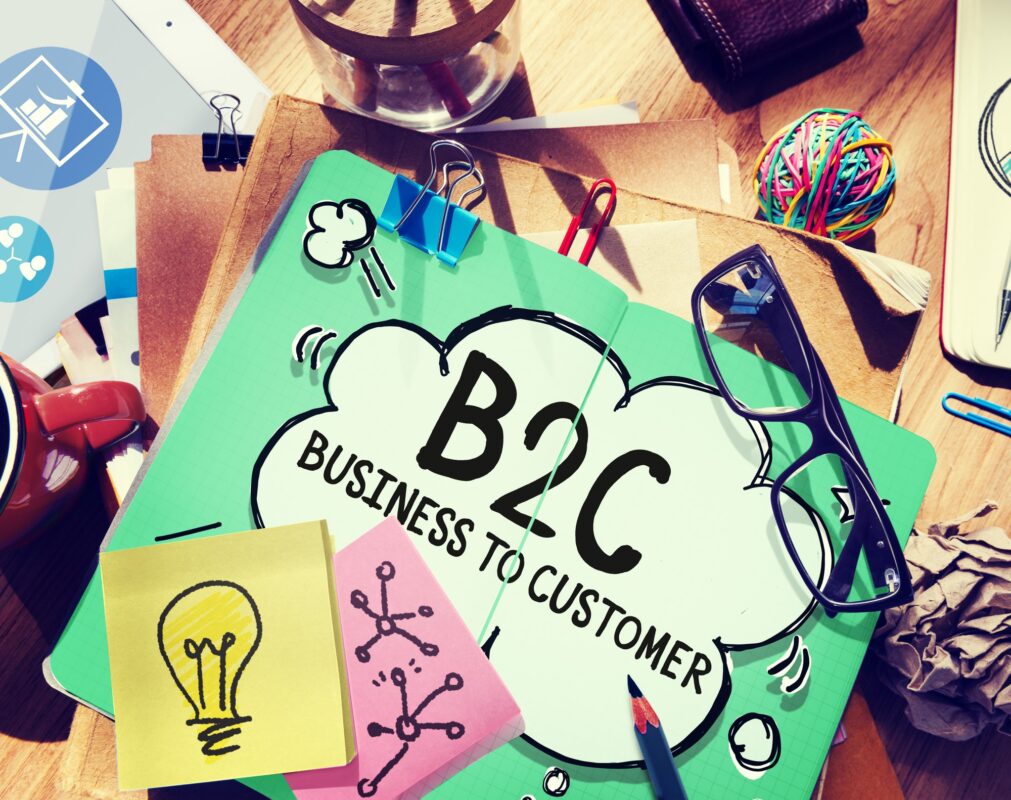Discover how to create high-converting B2B SEM campaigns. This guide covers keyword research, ad copy, landing pages, ABM, and more to maximize your ROI.
In the competitive world of B2B marketing, Search Engine Marketing (SEM) is a powerful tool for driving targeted traffic and generating high-quality leads. However, creating campaigns that not only attract clicks but also convert requires a strategic approach. From keyword selection to landing page optimization, every detail matters.
In this blog, we’ll explore how to create high-converting B2B SEM campaigns. Whether you’re new to SEM or looking to refine your strategy, these tips will help you maximize your ROI and achieve your business goals. Let’s dive in!
Why High-Converting B2B SEM Campaigns Matter
B2B SEM is more than just driving traffic—it’s about attracting the right audience and guiding them toward conversion. Here’s why high-converting campaigns are crucial:
- Maximize ROI: Convert more clicks into leads and sales, ensuring your ad spend delivers results.
- Improve Lead Quality: Target decision-makers and high-value prospects.
- Stay Competitive: Outperform competitors in search engine results.
- Build Brand Authority: Consistent visibility builds trust and credibility.
In short, high-converting SEM campaigns are essential for driving growth and staying ahead in the B2B space.
Step 1: Conduct In-Depth Keyword Research
Keyword research is the foundation of any successful SEM campaign. For B2B, it’s even more critical.
1. Focus on Long-Tail Keywords
- Long-tail keywords are more specific and less competitive.
- Example: Instead of “CRM software,” target “best CRM software for small businesses.”
2. Understand Buyer Intent
- Use tools like Google Keyword Planner or SEMrush to identify keywords with high commercial intent.
- Look for keywords that indicate readiness to buy, such as “pricing” or “demo.”
3. Analyze Competitors
- Identify keywords your competitors are targeting.
- Use tools like SpyFu or Ahrefs to uncover their strategies.
Pro Tip: Use negative keywords to filter out irrelevant traffic and improve ROI.
Step 2: Craft Compelling Ad Copy
Your ad copy is the first impression potential customers have of your business. Make it count.
1. Highlight Unique Selling Points (USPs)
- Focus on what sets your product or service apart.
- Example: “Boost productivity with our AI-powered CRM software.”
2. Use Action-Oriented Language
- Encourage clicks with phrases like “Get Started,” “Request a Demo,” or “Learn More.”
- Create urgency with terms like “Limited Time Offer” or “Exclusive Deal.”
3. Include Keywords
- Use targeted keywords in your headlines and descriptions.
- Ensure your ad copy aligns with the search intent.
Pro Tip: Use Google Ads’ Responsive Search Ads to automatically test different headlines and descriptions.
Step 3: Optimize Landing Pages for Conversions
Your landing page is where the magic happens. Here’s how to make it conversion-friendly:
1. Align with Ad Messaging
- Ensure your landing page matches the ad’s headline and description.
- Use the same keywords to maintain consistency.
2. Focus on Benefits
- Highlight how your product or service solves the buyer’s problem.
- Use case studies or testimonials to build trust.
3. Include Clear CTAs
- Use action-oriented language like “Request a Demo” or “Get a Free Quote.”
- Place CTAs above the fold and throughout the page.
Pro Tip: Use tools like Unbounce or Instapage to create and test high-converting landing pages.
Step 4: Implement Account-Based Marketing (ABM)
ABM is a powerful strategy for B2B SEM, focusing on high-value accounts.
1. Identify Target Accounts
- Use firmographic data (industry, company size, revenue) to identify ideal accounts.
- Leverage tools like LinkedIn Sales Navigator or ZoomInfo for prospecting.
2. Create Personalized Ads
- Tailor ad copy and landing pages to specific accounts.
- Use dynamic ads to automatically insert the account’s name or industry.
3. Track and Measure
- Use UTM parameters to track account-specific campaigns.
- Measure engagement and conversions for each account.
Pro Tip: Use Terminus or Demandbase to streamline your ABM efforts.
Step 5: Leverage LinkedIn Ads
LinkedIn is a goldmine for B2B SEM, offering highly targeted advertising options.
1. Target by Job Title and Industry
- Reach decision-makers like CEOs, IT managers, or procurement officers.
- Focus on industries relevant to your product or service.
2. Use Sponsored Content
- Promote blog posts, case studies, or whitepapers to build credibility.
- Use carousel ads to showcase multiple products or features.
3. Run Lead Gen Forms
- Use LinkedIn’s lead gen forms to capture contact information directly on the platform.
- Pre-fill forms with LinkedIn profile data to reduce friction.
Pro Tip: Use LinkedIn Campaign Manager to track performance and optimize your campaigns.
Step 6: Optimize for Mobile
With over 60% of B2B buyers using mobile devices, mobile optimization is a must.
1. Use Responsive Design
- Ensure your landing pages and ads look great on all devices.
- Test your design on multiple screen sizes and browsers.
2. Simplify Forms
- Use fewer fields and autofill options to make forms mobile-friendly.
- Offer alternative contact methods, like click-to-call buttons.
3. Optimize for Speed
- Compress images and use AMP (Accelerated Mobile Pages) for faster loading.
- Minimize redirects and eliminate pop-ups.
Pro Tip: Use Google’s Mobile-Friendly Test to check your website’s mobile performance.
Step 7: Monitor and Adjust
SEM is an ongoing process. Regularly monitor your campaigns and make adjustments to maximize ROI.
1. Track Key Metrics
- Monitor CTR, CPC, conversion rates, and ROI.
- Use tools like Google Analytics or HubSpot for detailed insights.
2. A/B Test Everything
- Test different ad copy, landing pages, and CTAs to see what works best.
- Use tools like Google Optimize or VWO for easy testing.
3. Refine Your Strategy
- Reallocate budget to high-performing campaigns.
- Pause or adjust underperforming ads.
Pro Tip: Set up automated alerts to notify you of significant changes in performance.
Conclusion
Creating high-converting B2B SEM campaigns requires a strategic approach, from keyword research to landing page optimization. By focusing on buyer intent, crafting compelling ad copy, and leveraging tools like ABM and LinkedIn Ads, you can maximize your ROI and achieve your business goals.
Remember, SEM is an ongoing process. Regularly monitor, test, and refine your campaigns to ensure they’re always performing at their best. With the right strategies, you can turn your B2B SEM efforts into a significant driver of growth and success. You can contact us for a Website Creation and Management plan; we will handle everything for you.












